Intro
In Excel, referencing another sheet can be a bit tricky, but the INDIRECT function can make it easier. The INDIRECT function is a powerful tool that allows you to reference a cell or range of cells on another sheet, even if the sheet name is dynamic. In this article, we'll explore how to use the INDIRECT function to reference another sheet in Excel.
The Importance of Referencing Another Sheet
Referencing another sheet is a common requirement in Excel, especially when working with multiple worksheets. For example, you might want to:
- Consolidate data from multiple sheets into a single sheet
- Use data from one sheet to perform calculations on another sheet
- Create a dashboard that summarizes data from multiple sheets
However, referencing another sheet can be problematic if the sheet name is dynamic or if you need to reference a cell or range of cells on another sheet. This is where the INDIRECT function comes in.
What is the INDIRECT Function?
The INDIRECT function is a lookup function in Excel that returns a reference to a cell or range of cells based on a text string. The syntax for the INDIRECT function is:
INDIRECT(ref_text, [a1])
Where:
- ref_text is the text string that contains the reference to the cell or range of cells
- a1 is an optional argument that specifies whether the reference is in A1 or R1C1 format
How to Use the INDIRECT Function to Reference Another Sheet
To use the INDIRECT function to reference another sheet, you need to follow these steps:
- Enter the sheet name in a cell: Enter the name of the sheet you want to reference in a cell, say cell A1.
- Use the INDIRECT function: In the cell where you want to reference the other sheet, enter the INDIRECT function, referencing the cell that contains the sheet name. For example:
=INDIRECT(A1&"!A1")
Here's how it works:
- The
A1in the INDIRECT function references the cell that contains the sheet name. - The
&symbol is used to concatenate the sheet name with the cell reference. - The
!symbol is used to separate the sheet name from the cell reference. - The
A1at the end of the formula references the cell on the other sheet that you want to reference.
Example
Suppose you have two sheets, "Sheet1" and "Sheet2", and you want to reference cell A1 on Sheet2 from Sheet1. Here's how you can use the INDIRECT function:
| A | |
|---|---|
| 1 | Sheet2 |
| 2 | =INDIRECT(A1&"!A1") |
In this example, the INDIRECT function references cell A1 on Sheet2, using the sheet name in cell A1 as the reference.
Tips and Variations
Here are some tips and variations to keep in mind when using the INDIRECT function to reference another sheet:
- Use quotes: If your sheet name contains spaces or special characters, you need to enclose it in quotes. For example:
=INDIRECT("'"&A1&"'!A1") - Reference a range: To reference a range of cells on another sheet, simply modify the cell reference in the INDIRECT function. For example:
=INDIRECT(A1&"!A1:B2") - Use multiple sheet references: You can use the INDIRECT function to reference multiple sheets by using an array formula. For example:
=INDIRECT({"Sheet1"; "Sheet2"}&"!A1")
Advantages of Using the INDIRECT Function
The INDIRECT function offers several advantages when referencing another sheet in Excel:
- Dynamic sheet references: The INDIRECT function allows you to reference a sheet dynamically, using a cell reference or a formula.
- Easy to use: The INDIRECT function is relatively easy to use, especially when compared to other lookup functions like VLOOKUP or INDEX/MATCH.
- Flexible: The INDIRECT function can be used to reference a cell or range of cells on another sheet, making it a versatile tool in Excel.
Conclusion
In conclusion, the INDIRECT function is a powerful tool in Excel that allows you to reference another sheet dynamically. By following the steps outlined in this article, you can use the INDIRECT function to reference a cell or range of cells on another sheet, making it easier to work with multiple worksheets in Excel.
Now, let's take a look at some examples of how the INDIRECT function can be used in real-world scenarios.
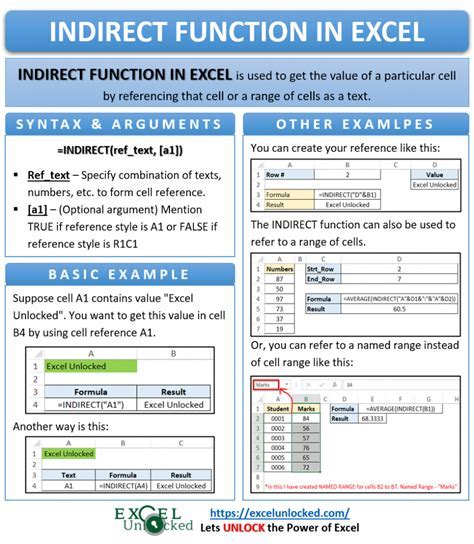
Real-World Examples
Here are some examples of how the INDIRECT function can be used in real-world scenarios:
- Consolidating data: Suppose you have multiple sheets that contain sales data for different regions. You can use the INDIRECT function to consolidate the data into a single sheet.
- Creating a dashboard: Suppose you have multiple sheets that contain data for different metrics. You can use the INDIRECT function to create a dashboard that summarizes the data from each sheet.
Gallery
Indirect Function Gallery
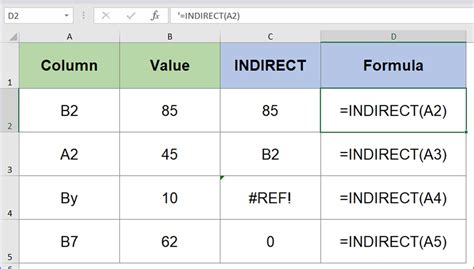
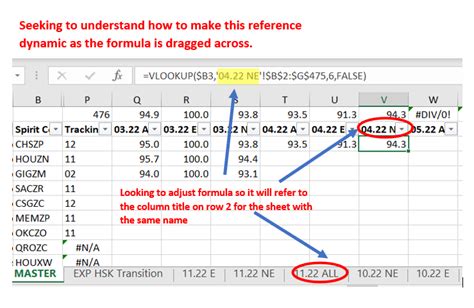
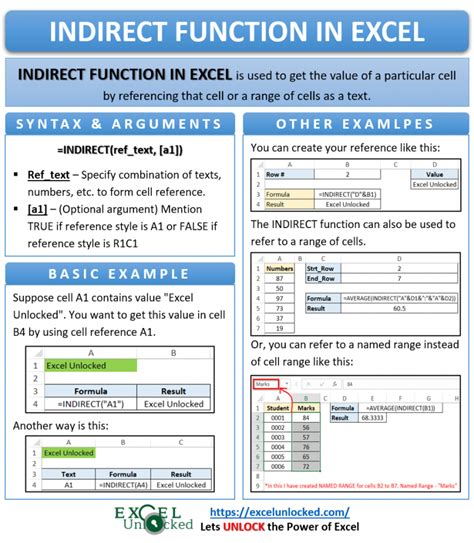
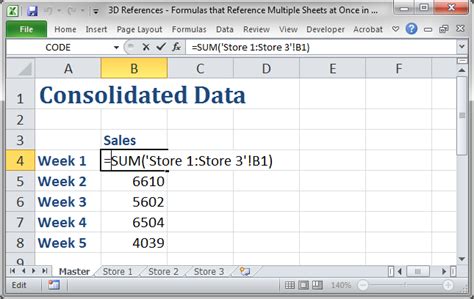
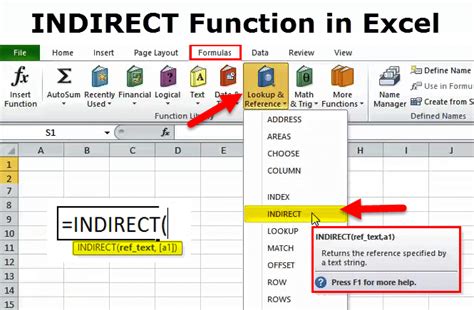
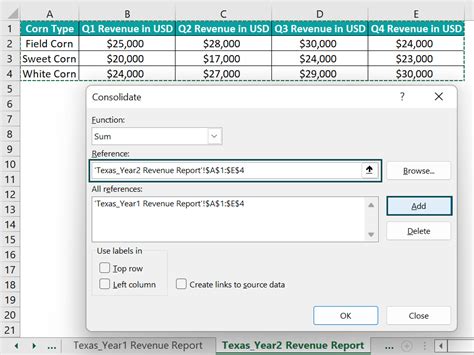
FAQ
Q: What is the INDIRECT function in Excel? A: The INDIRECT function is a lookup function that returns a reference to a cell or range of cells based on a text string.
Q: How do I use the INDIRECT function to reference another sheet? A: To use the INDIRECT function to reference another sheet, enter the sheet name in a cell, then use the INDIRECT function to reference the cell that contains the sheet name.
Q: Can I use the INDIRECT function to reference a range of cells on another sheet? A: Yes, you can use the INDIRECT function to reference a range of cells on another sheet by modifying the cell reference in the formula.
Q: What are the advantages of using the INDIRECT function? A: The INDIRECT function offers several advantages, including dynamic sheet references, ease of use, and flexibility.
Engage with Us
We hope this article has helped you understand how to use the INDIRECT function to reference another sheet in Excel. If you have any questions or comments, please feel free to share them below.
